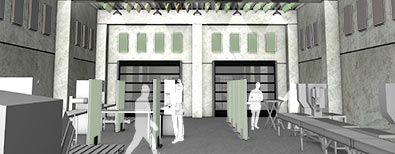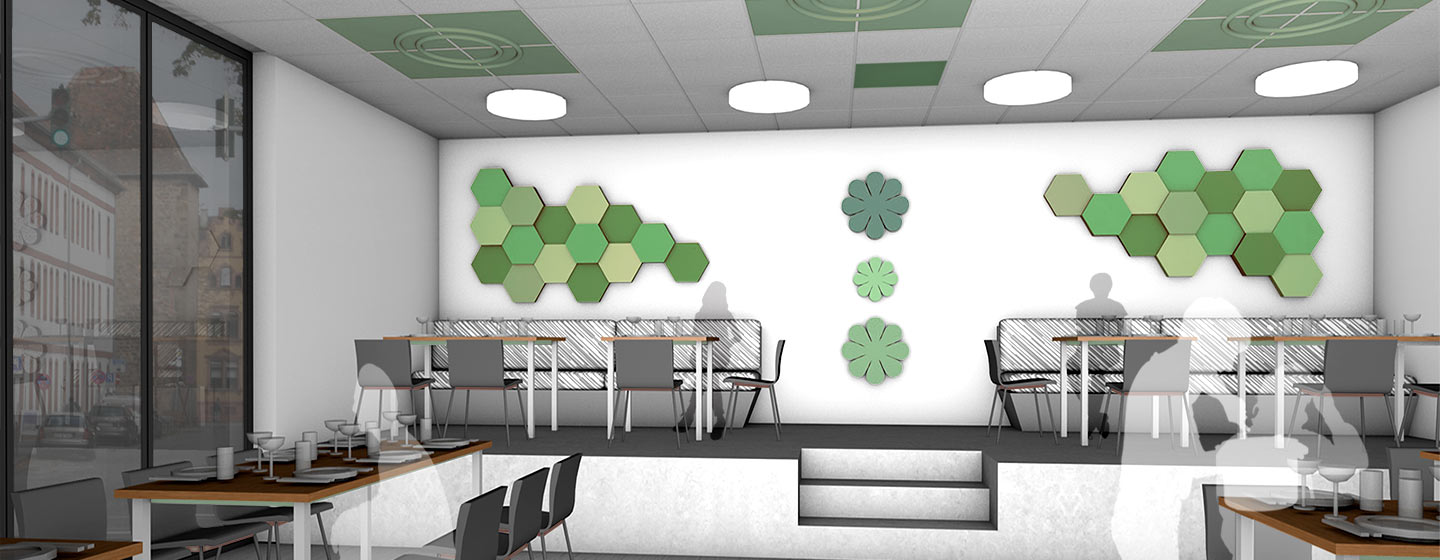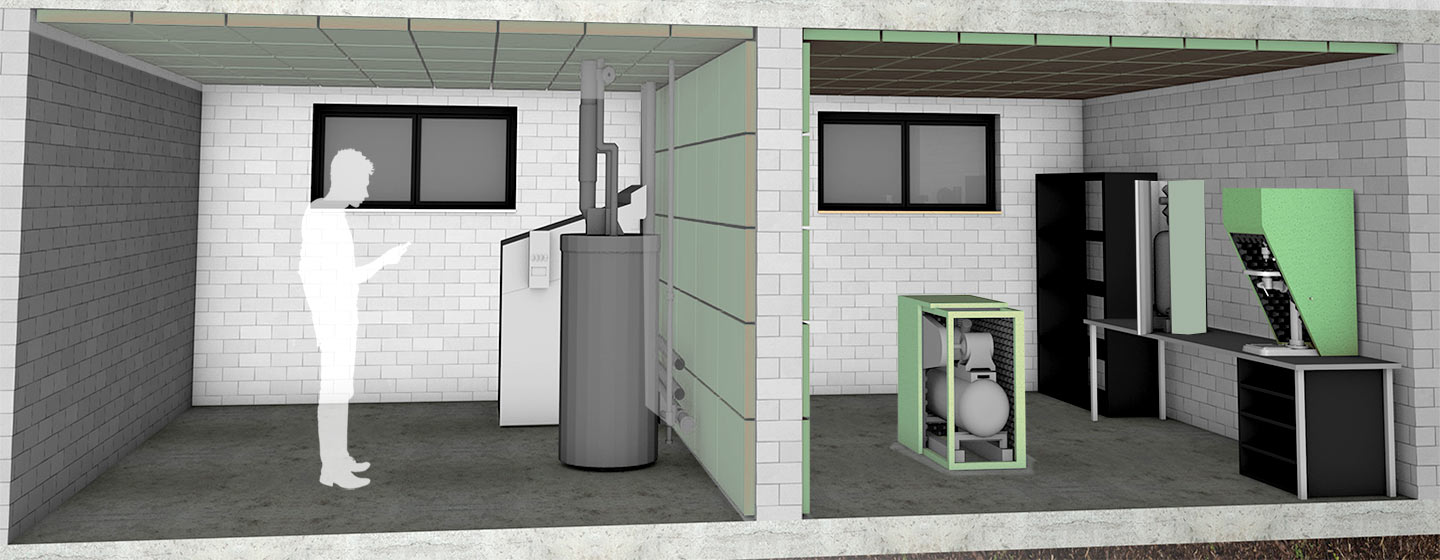soniflex Lexicon
Die neusten Einträge
Sonic speed
Sonic speed (or: speed of sound) cs is the distance travelled per unit of time by a sound wave as it propagates through an elastic medium. The propagation speed depends heavily on the type, temperature and density of the medium. In dry air at 20°C (68°F) and 1 bar air pressure, the speed of sound is 343.2 m/s (1,126 ft/s).
Die meist gelesenen Einträge
Sound insulation
Sound insulation is the acoustic shielding of a room or device in order to prevent or reduce the transmission of air-borne or solid-borne sound to neighboring spaces. The aim is to prevent the sound from propagating by using sound insulation materials to build a sound barrier around the noise source.
Closed-cell foams
In closed-cell foams, the walls between the individual cells are completely closed. As this prevents the penetration of liquids and vapor etc., closed-cell foams are suitable for use also in spaces with increased moisture load.





